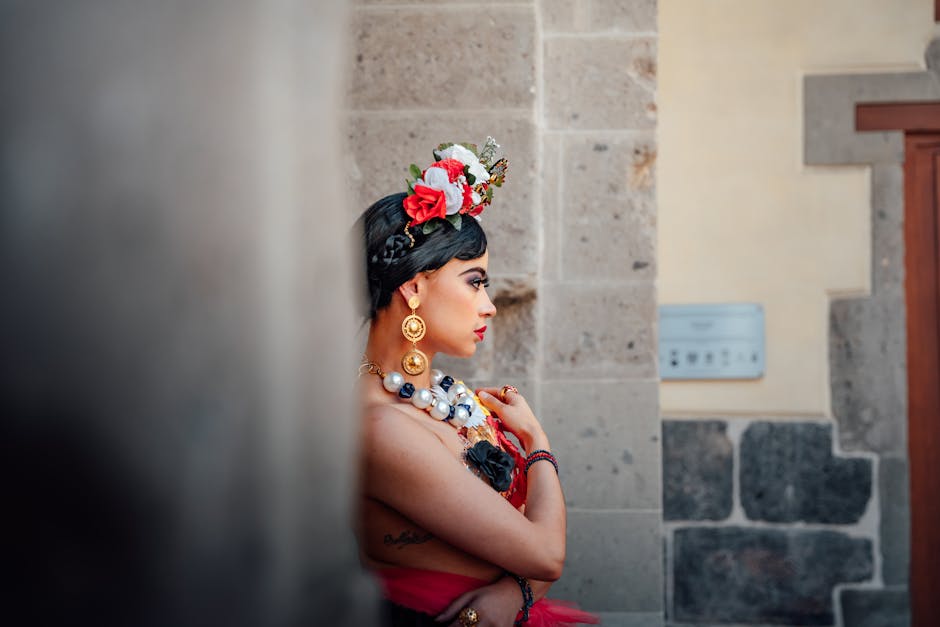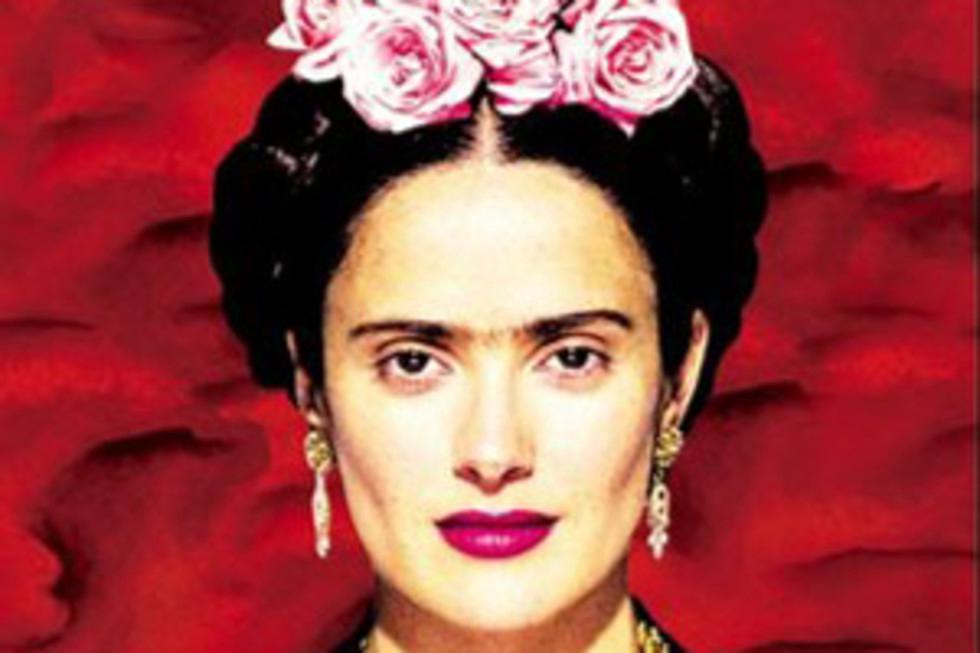Frida Kahlo's life was marked by significant challenges and resilience. From her early battle with polio to a devastating bus accident, her journey shows how pain can be transformed into powerful art. Her work offers an honest look into her world, inviting us to connect with her experiences on a personal level.
Early Life and Initial Health Challenges
Frida Kahlo's early years were shaped by health issues that could have dampened a less determined spirit. At six, polio left her bedridden for nine months, weakening her right leg. This difference led her to wear long skirts, both hiding her limp and highlighting her Mexican heritage.
Born on July 6, 1907, in Coyoacán, Frida grew up in a home that blended cultures. Her father was German, while her mother brought Indigenous Mexican and Spanish influences. This mix of backgrounds added complexity to her developing identity.
At 18, Frida faced another major setback: a bus accident that severely injured her spine, shoulder, ribs, and pelvis. This event would have lasting effects on her health and art.
Confined to bed once again, Frida discovered a new outlet. Using a mirror, she began to explore art, creating works that reflected not just her appearance but also her inner struggles.
Kahlo's early influences:
- Her father introduced her to literature and philosophy
- Her mother's religious practices influenced her emotional growth
- The blend of cultures in her home shaped her unique perspective
These early challenges forged Frida's resilience and laid the groundwork for her artistic vision. Despite physical limitations, she cultivated a strong spirit that would define her life and work.

The Bus Accident and Its Aftermath
On September 17, 1925, Frida Kahlo's life changed dramatically. The bus she was riding collided with a streetcar, leaving her with severe injuries. Her spine was broken in three places, and she suffered fractures to her collarbone, ribs, and right leg. Most notably, a steel handrail pierced her pelvis.
The recovery was long and difficult. Frida spent weeks in the hospital, followed by months at home. She underwent numerous surgeries and was often confined to plaster corsets to support her damaged spine.
This accident marked the beginning of chronic pain that would last throughout her life. Each surgery brought hope for relief, but often fell short.
"I am not sick. I am broken. But I am happy to be alive as long as I can paint." – Frida Kahlo
Despite these challenges, Frida's spirit remained strong. She turned to art during her recovery, using painting as a way to express her experiences. Her canvases became visual diaries, exploring themes of pain, resilience, and identity.
The long-term effects of the accident included multiple miscarriages, adding emotional pain to her physical suffering. These experiences found their way into her art, as seen in paintings like "Henry Ford Hospital."
Frida transformed her adversity into powerful artistic expression. She painted on her medical corsets, turning symbols of confinement into canvases for her creativity. Each new health challenge seemed to deepen the themes in her work.
The bus accident was a defining moment for Frida. It reshaped her physical reality and sparked an artistic journey that would make her an icon of strength and creativity. Through her art, she showed that while pain was a constant companion, it did not define her entire existence.

Art as a Reflection of Physical and Emotional Pain
Kahlo's paintings vividly express her physical and emotional struggles. Each work offers a window into her experience of pain and resilience.
Notable Works:
- "The Broken Column" (1944): Depicts Kahlo's spine as a crumbling column, with nails piercing her skin. Her gaze remains defiant, capturing both physical agony and determination.
- "Henry Ford Hospital" (1932): Explores the trauma of her miscarriages. Kahlo portrays herself nude and bleeding on a hospital bed, surrounded by symbolic objects connected by red ribbons.
- "Self-Portrait with Thorn Necklace and Hummingbird" (1940): Uses religious symbolism to convey ongoing pain. The thorns digging into her neck and the dead hummingbird represent suffering and lost hopes.
- "The Two Fridas" (1939): Shows dual aspects of Kahlo's identity, reflecting her mixed heritage and emotional state. Exposed hearts and connecting arteries symbolize internal struggles.
- "Tree of Hope, Remain Strong" (1946): Contrasts a bandaged Frida on a hospital bed with a strong, seated version of herself, embodying her ongoing battle between physical frailty and inner strength.
Through these works, Kahlo transformed her personal hardships into art that resonates widely. Her paintings serve as both self-expression and a means of connecting with others who face their own challenges. By sharing her vulnerabilities so openly, Kahlo created a lasting legacy that continues to inspire resilience in the face of adversity.
Later Health Struggles and Medical Interventions
As time passed, Frida Kahlo's health issues intensified. The physical scars from her youthful accident deepened, leading to new ailments and increasingly invasive medical procedures. By the 1940s, Kahlo's health was rapidly declining. Persistent pain led to numerous surgeries aimed at addressing the lingering damage from her bus accident.
To manage her pain, she frequently wore elaborate medical corsets—some made of plaster, others of steel. Rather than letting these braces diminish her spirit, she transformed them into canvases, adorning them with bright colors and intricate designs.
In 1953, Kahlo's right leg, weakened since childhood polio, developed gangrene. Doctors had to amputate below the knee. Frida created a prosthetic leg adorned with a red boot and bells—a defiant declaration of her individuality.
This amputation exacerbated her existing chronic pain and introduced new emotional burdens. Her diaries from this time reveal a deepening sense of despair and melancholia. Frida battled not only physical ailments but also profound depression. She wrote, "I am not sick. I am broken. But I am happy to be alive as long as I can paint."
Even bedridden, she continued to paint, using her canvases as an outlet for her pain. During this challenging period, she held her first solo exhibition in Mexico, arriving by ambulance and receiving guests from a bed in the gallery center.
Her later works became richer with symbolism, sometimes veering towards the surreal as she explored themes of death, duality, and rebirth. In paintings like "The Broken Column" and "The Wounded Deer," she exposed her suffering, creating visual tableaux that spoke to human vulnerability.
Frida painted continuously, each brushstroke defying the darkness threatening to consume her. She engaged in political activism, maintained relationships within the art community, and remained a symbol of strength and resilience.
Her final days were marked by increasing pain and dependency on painkillers. She passed away on July 13, 1954, her death as enigmatic as her life. Whether from pulmonary embolism or a deliberate overdose remains uncertain, but her legacy as an artist who transformed every wound into a window revealing the depth of human experience is undeniable.
Legacy and Impact of Health on Her Life and Work
Frida Kahlo's enduring legacy as an artist demonstrates the transformative power of personal adversity. Her continued popularity stems largely from the honesty with which she approached her health struggles.
Her personal battles are not peripheral to her artistic journey; they form its essence. Each painting stands as evidence of her resilience and a beacon of empathy for those grappling with their traumas. Frida's art became both sanctuary and battleground where she fought against physical pain, emotional turmoil, and societal constraints.
Exploring Inner Turmoil Through Self-Portraits
- Profound explorations of inner struggles
- Brought private sufferings into public view
- Challenged societal norms
- Evoked a sense of shared humanity
Frida's willingness to depict her suffering without romanticizing it pioneered a new path in art history. She departed from aesthetics prioritizing beauty and perfection, instead delivering raw explorations of pain and resilience. This shift positioned her as a trailblazer and inspired future generations of artists.
Her portrayal of health issues transforms individual agony into universal symbols. These works resonate deeply because they confront suffering directly, portraying it as both a personal and collective experience. In doing so, Frida created space for viewers to explore their vulnerabilities, finding strength in the shared human condition.
"I paint my own reality. The only thing I know is that I paint because I need to, and I paint whatever passes through my head without any other consideration."1
Kahlo's life, marked by physical ailments, emotional conflicts, and societal pressures, became the crucible that forged her unique artistic voice. Her works serve as visual diaries, chronicling not just life events but profound psychological states. This richness ensures her art transcends time, speaking to universal themes of pain, identity, love, and resilience.
Frida's influence extends beyond her canvases. She is a cultural icon, her image as recognizable as her artwork. Through her vibrant clothing, unibrow, and unflinching stare, she crafted a persona celebrating her roots, identity, and defiance against conventional beauty standards.
In today's discussions on mental health, chronic illness, and feminist empowerment, Frida Kahlo remains a powerful reference point. Her life story serves as inspiration, urging individuals to embrace their identities, confront their struggles, and use their experiences as a source of strength and creative expression.
Ultimately, Frida Kahlo's legacy transcends her paintings, embodying the spirit that defied adversity to create them. Her health issues did not define her but became the medium through which she explored the depths of human experience. Every brushstroke testified to her resilience, every canvas a window into her soul, and through her art, she continues to inspire those who find solace in her story.

Frida Kahlo's legacy reminds us that our struggles can become the wellspring of our strength. Her art, born from pain and resilience, continues to inspire people globally. Through her portrayal of suffering and endurance, she has left a mark on the world, showing us that even in vulnerable moments, we can find the courage to create something transformative.
























